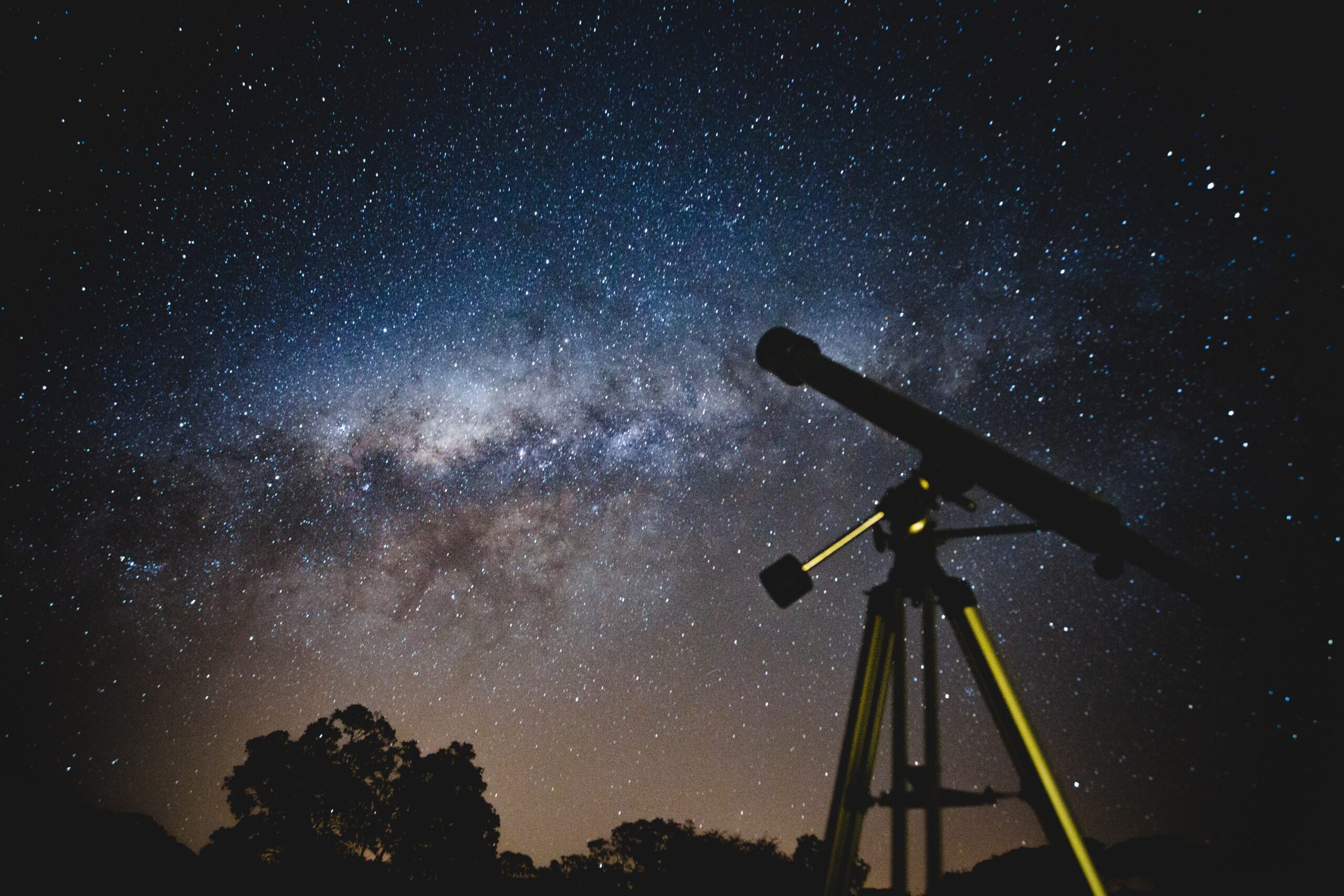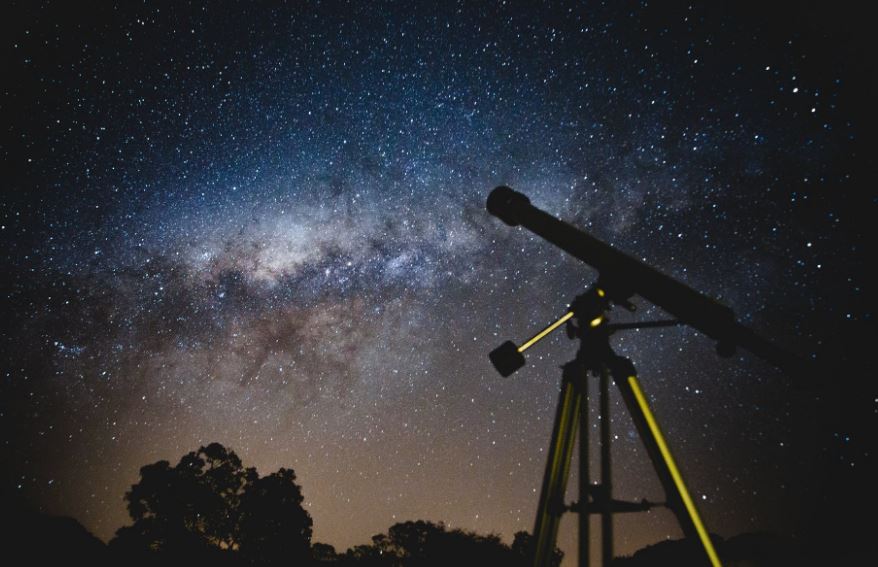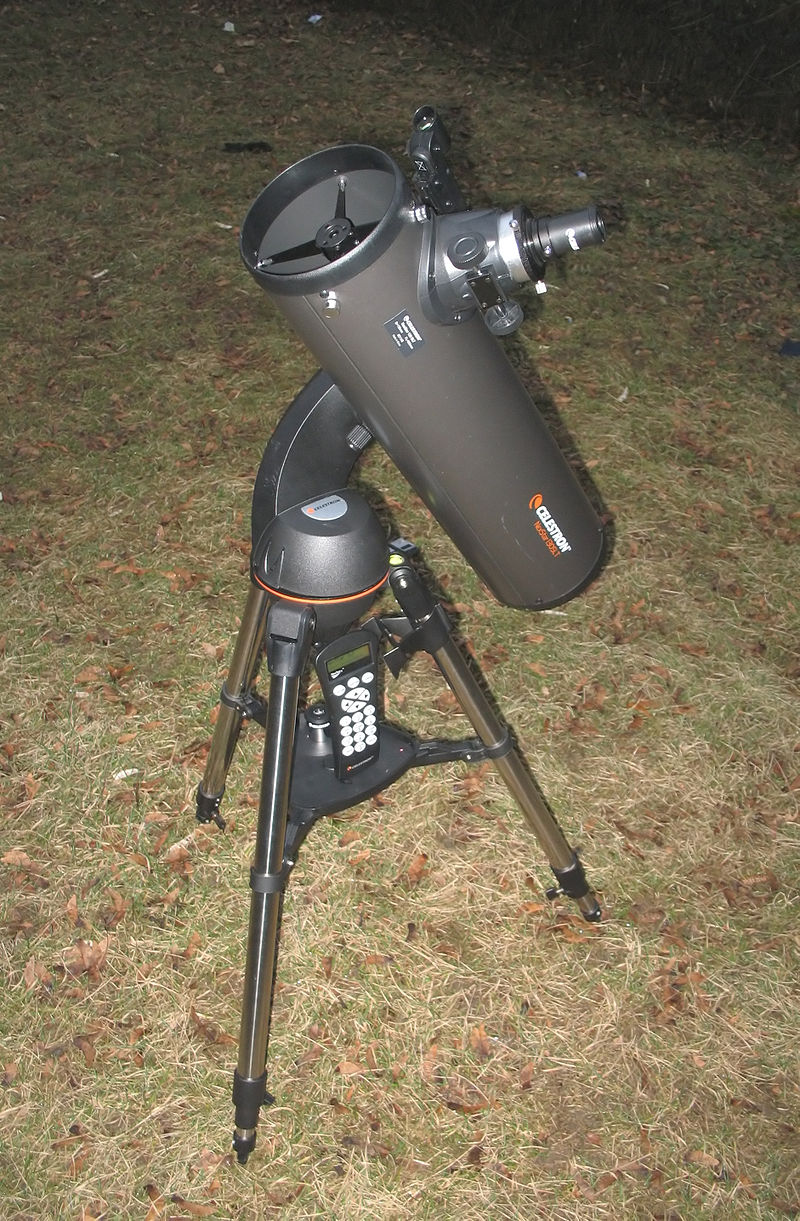The Most Powerful Telescopes in the World
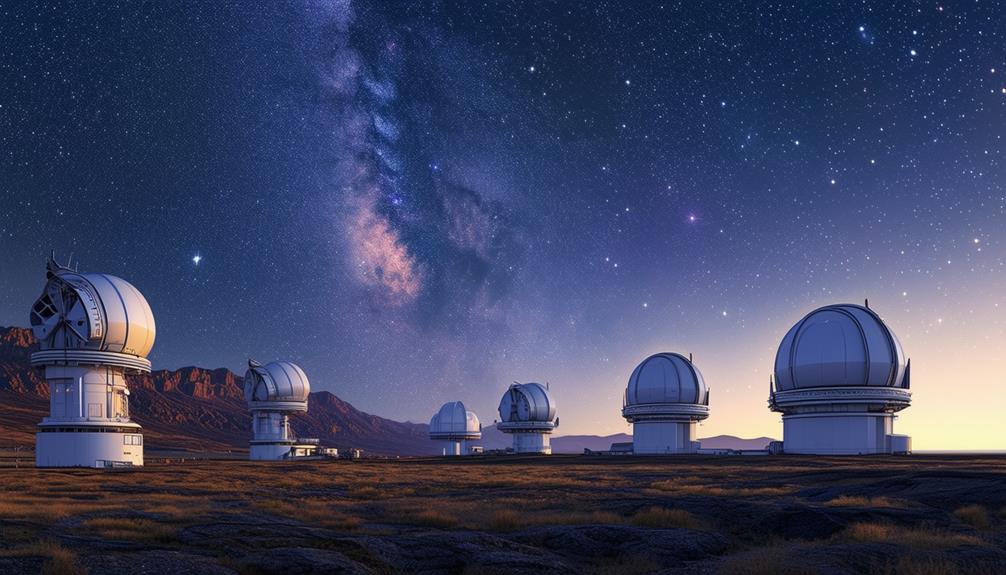
When considering the most powerful telescopes in the world, you might picture instruments capable of peering into the depths of space and time. These technological marvels, such as the James Webb Space Telescope and the Square Kilometre Array, are not merely engineering feats but also gateways to understanding the cosmos. How do they achieve such remarkable clarity and sensitivity?
By exploring giants like the Giant Magellan Telescope and the 500-meter Aperture Spherical Telescope, we can uncover the secrets behind their groundbreaking capabilities. Are you ready to delve into the mechanics and innovations that distinguish these telescopes?
James Webb Space Telescope
Launched in 2021, the James Webb Space Telescope orbits the Sun at a distance of 1.5 million kilometers from Earth. This remarkable telescope boasts a mirror 21.4 feet in diameter, making it the most powerful tool ever created to explore the vastness of space. Its primary mission is to look back over 13.5 billion years and capture images of the earliest galaxies in the universe.
Unlike the Hubble Space Telescope, which relies on optical and ultraviolet wavelengths, the James Webb Space Telescope specializes in infrared. This capability allows it to see through cosmic dust and uncover hidden structures in the universe. Its advanced infrared technology enables the investigation of exoplanet atmospheres and the detection of faint astronomical signals previously unseen.
The telescope's 5-layer sunshield provides protection equivalent to SPF 1 million, shielding it from the Sun's infrared radiation. This ensures that Webb's instruments remain cool and sensitive enough to capture groundbreaking images.
The James Webb Space Telescope unfolds like a Transformer in space, expanding and enhancing the explorations initiated by Hubble. With its unmatched sensitivity and technological prowess, we're on the brink of a new era of astronomical discoveries.
Extremely Large Telescope
Situated on Cerro Armazones in Chile, the Extremely Large Telescope (ELT) is set to revolutionize ground-based astronomy with its 39-meter (128-foot) diameter. Designed by the European Southern Observatory (ESO), the ELT will push the boundaries of astronomical research with its cutting-edge technology, capturing the universe's most detailed images with unprecedented clarity and precision.
Construction of the ELT began in 2018, and it's expected to achieve first light in 2028. This milestone will herald a new era in astronomical observations. The telescope's enormous size will enable it to observe celestial objects and phenomena in exquisite detail, significantly enhancing our understanding of the cosmos. It will allow scientists to make groundbreaking advancements, from studying exoplanets and their atmospheres to investigating the nature of dark matter and dark energy.
Once operational, the ELT will be pivotal in advancing scientific knowledge. It will provide researchers with a powerful tool to explore the universe's deepest secrets, making it a cornerstone of modern astronomical research. With the ELT, the future of astronomy looks incredibly promising.
Giant Magellan Telescope
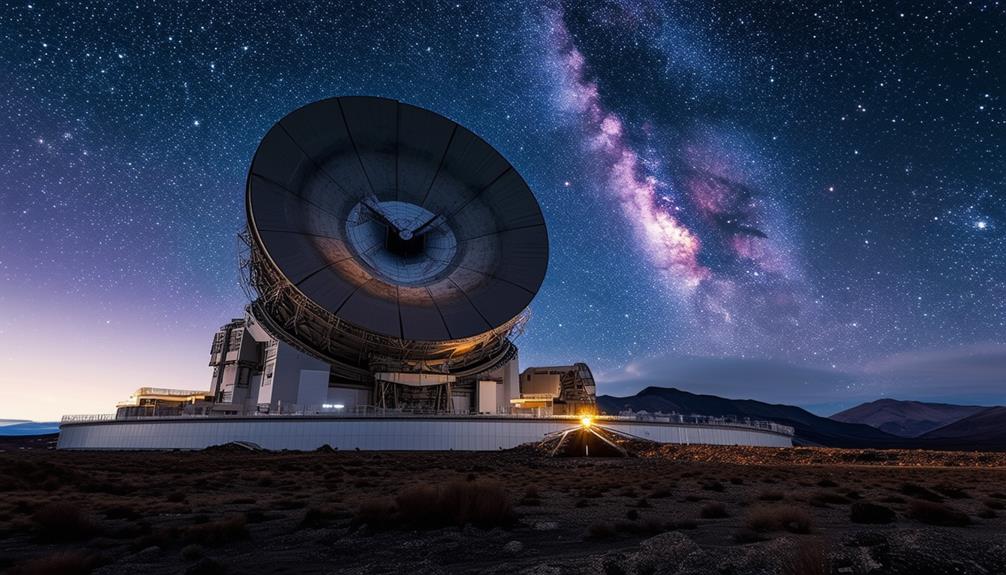
Located in the Atacama Desert of Chile, the Giant Magellan Telescope (GMT) is poised to revolutionize ground-based astronomy with its seven 8.4-meter mirrors and state-of-the-art technology. Set to be one of the world's largest telescopes, the GMT features a primary mirror with an effective aperture of 24.5 meters. This advanced design enables the GMT to produce images up to 10 times clearer than those captured by the Hubble Space Telescope.
Key contributors to the project, including Caltech and the University of Arizona, are pushing the boundaries of astronomical observation and understanding. The innovative engineering behind the GMT's mirrors ensures unprecedented precision and clarity, allowing astronomers to explore deeper into the cosmos than ever before.
Scheduled for initial light in 2029, the Giant Magellan Telescope is part of a new generation of extremely large telescopes expected to make groundbreaking discoveries in astrophysics and cosmology. With a total light-collecting area significantly larger than previous telescopes, the GMT will enable researchers to investigate phenomena ranging from distant galaxies to the potential for life on other planets. This marks the dawn of a new era in astronomical exploration.
Square Kilometre Array
The Square Kilometre Array (SKA) project is set to revolutionize radio astronomy by integrating efforts from international sites in Australia and South Africa. This monumental radio telescope will have a combined collecting area of one square kilometre, making it one of the most ambitious projects in the field. The SKA's unparalleled sensitivity and resolution will enable scientists to explore the universe more profoundly than ever before.
Utilizing cutting-edge technology, the SKA aims to investigate some of the universe's deepest mysteries, including dark matter and dark energy. By capturing extremely faint radio signals from the distant past, the SKA will help us understand the cosmic dawn—the era when the first stars and galaxies formed.
The vast scale and collecting area of this radio telescope are set to revolutionize our understanding of the universe, providing insights previously beyond our reach. Located in Australia and South Africa, the SKA will leverage the unique qualities of both sites to maximize its scientific potential. Prepare for groundbreaking discoveries that will reshape our knowledge of the cosmos through the unparalleled capabilities of the Square Kilometre Array.
500-meter Aperture Spherical Telescope

Let's discuss the 500-meter Aperture Spherical Telescope (FAST) in China. As the world's largest filled-aperture radio telescope, FAST excels at detecting faint pulsars and even gravitational waves. Its immense size and sensitivity significantly advance our understanding of the universe through radio astronomy.
World's Largest Radio Telescope
Located in Guizhou, China, the 500-meter Aperture Spherical Telescope (FAST) stands as the world's largest filled-aperture radio telescope. This immense instrument, with a diameter of 500 meters, significantly surpasses other telescopes in its category, marking a major milestone in radio astronomy.
FAST's vast size enables it to detect radio signals with unparalleled sensitivity and precision, making it an indispensable asset for astronomical research. FAST operates through a unique design that allows it to capture even the faintest radio signals from distant regions of the universe.
By collecting these weak signals, scientists can delve into cosmic mysteries, investigating phenomena previously beyond our reach. The telescope's advanced capabilities are crucial for studying a wide range of astronomical objects and events, including galaxies, nebulae, black holes, and supernovae.
This engineering marvel in Guizhou epitomizes human ingenuity and the relentless pursuit of knowledge. FAST not only underscores China's commitment to advancing scientific frontiers but also plays a vital role in global astronomical research, offering new insights into the universe's secrets.
Detection of Faint Pulsars
FAST's innovative design allows astronomers to detect faint pulsars hidden deep in space. As the world's largest filled-aperture radio telescope, FAST, located in the secluded mountains of Guizhou, China, features a remarkable 500-meter diameter. This vast size enables it to capture and analyze incredibly weak celestial signals, including those from pulsars.
Pulsars, the rapidly rotating remnants of dead stars, emit beams of radiation detectable by sensitive instruments like FAST. Due to its unparalleled sensitivity, FAST can detect faint signals that other telescopes might miss. This capability is crucial for studying pulsars, offering valuable insights into the extreme environments and behaviors of neutron stars.
By detecting these weak pulses, FAST also contributes to broader astronomical research, enhancing our understanding of the universe's most enigmatic objects. FAST's ability to detect faint pulsars aids in the indirect search for gravitational waves, as pulsars can serve as natural laboratories for these spacetime ripples.
The remote location minimizes radio interference, ensuring the purity of the collected data. Overall, FAST stands as a monumental achievement in radio astronomy, expanding the boundaries of our cosmic knowledge.
Gravitational Waves Capabilities
The Five-hundred-meter Aperture Spherical Telescope (FAST) in Guizhou, China, has revolutionized the detection and study of gravitational waves. This colossal radio telescope, with its 500-meter dish, is a significant advancement in astrophysics, enabling scientists to investigate cosmic phenomena with unprecedented precision. FAST's enormous size and sensitivity allow it to capture and analyze the faintest gravitational waves, providing crucial insights into the universe's most enigmatic events.
FAST's massive dish makes it one of the most sensitive instruments globally, capable of picking up the subtle ripples in spacetime caused by cataclysmic cosmic events like the collision of black holes or neutron stars. These discoveries are reshaping our understanding of the universe.
As a leader in gravitational wave research, FAST is helping scientists make significant progress in astrophysics. By studying these waves, researchers can gain a deeper understanding of the fundamental forces that govern the cosmos. FAST isn't merely a telescope; it's a pivotal tool in humanity's quest to unravel the secrets of the universe.
Hubble Space Telescope
Launched in 1990, the Hubble Space Telescope has captured breathtaking images of the universe, free from atmospheric distortion. Unlike ground-based telescopes, Hubble orbits above Earth's atmosphere, allowing it to observe a wide range of wavelengths without interference. Its mirror, measuring 7.8 feet in diameter, provides unparalleled clarity in astronomical observations, revealing the wonders of space in unprecedented detail.
| Feature | Detail |
|---|---|
| Launch Year | 1990 |
| Mirror Size | 7.8 feet |
| Location | Above Earth's atmosphere |
| Key Contribution | Clear images without distortion |
Hubble's impact on astronomy is immense. By peering deep into space, it has captured stunning images of galaxies, nebulae, and other celestial objects. These observations have significantly advanced our understanding of the universe, leading to groundbreaking discoveries about its expansion, the nature of black holes, and the formation of stars.
The Hubble Space Telescope has become iconic not only for its scientific achievements but also for bringing the beauty of the cosmos to the public. Its clear, detailed images have inspired millions and underscored the importance of space exploration. Without a doubt, Hubble remains one of the most crucial telescopes in history.
Conclusion
You've now explored some of the most powerful telescopes in the world. From the infrared capabilities of the James Webb Space Telescope to the vast reach of the Square Kilometre Array, these instruments are expanding the frontiers of astronomical research.
Each telescope, with its unique capabilities, plays a crucial role in uncovering the secrets of our universe. So, keep looking up—you never know what groundbreaking discoveries these remarkable machines will reveal next.

